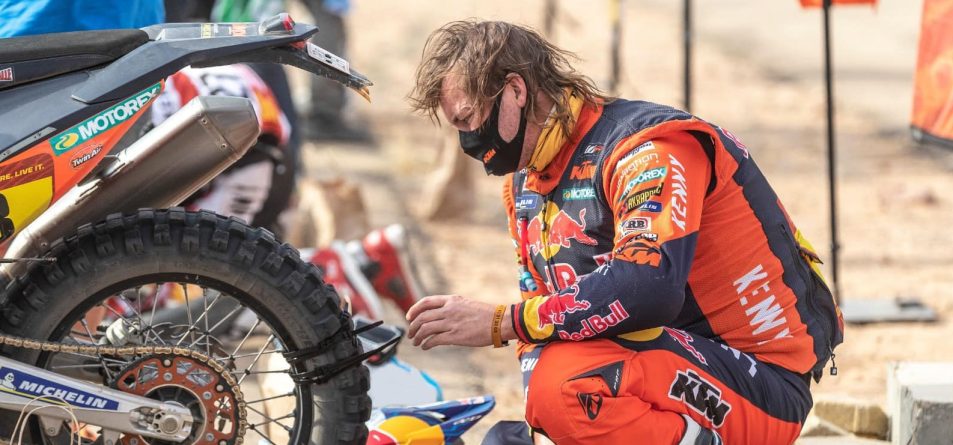The Dakar Rally remains the ultimate test of rider and machine racing terrain over 12 consecutive days under pressure of time. The race principle provided the foundation on the meaning of racing Dakar since it’s inception in 1978. The founder Thierry Sabine stated ‘“a challenge for those who go. A dream for those who stay behind”‘.

2021 Dakar Rally has reeled all competitors in to live the Dakar experience, to push to levels of performance- rider/driver and machines traversing terrain unknown to race events under the clock.
Whereas most Motorsport Championships are run over several weeks and months to determine winning results, Dakar represents calling out of competitors to raise all important race-on game with limited options of re-joining standings if anything goes wrong.
What do such requirements actually mean in terms of physical, mental and technical performance on route for 12 days? Well, for 1: all competitors know how hard preparations remain to even line-up on Dakar start-line. 2: all riders, drivers and crew across all categories- Bike, Car, SSV and Truck know deep down how much everyone wants a successful result. 3: racing Dakar for first or consecutive times is entering the unknown- each Stage will be different from the last and each day’s racing tests competitors spirit of surviving to race another.
To remain in sync for completing each Stage, competitors know their machines, know when to push, know where limits lie in terms of preserving machine versus gaining time over terrain which remains unforgiving to all movable parts on vehicles. So, where do these limits lie? Maintaining focus on balancing speed while navigating is task in itself. So is, pushing that line out to gain further gap in time on competitors.

As Sam Sunderland (Red Bull KTM Factory Team) says, if we cap the desire to push harder during racing to compensate for potential mechanical break-downs we would be an hour behind front-riders. For sure, new rules introduced by Dakar organization have re-adjusted the balance between racing at high speeds to minimize risk- by introducing limited number of rear tyres for Bikes, handing out road-books 15 minutes before start of Stages along with mandatory use of air-bags.
Albeit, changes in regulations have inadvertently challenged the riders to race within limits of tyre performance. Australian Toby Price, known for extreme measure of can-do-it- attitude was forced to tackle such a challenge in Stage 8, placing duct-tape and zip-ties over slash in rear Michelin tyre. Miraculously, tyre held up and Toby finished 1 minute behind Stage winner Jose Cornejo.
Within bounds of Dakar principle, it then becomes difficult to understand process riders and drivers go through when all-hail-human spirit to race Dakar ends up in withdrawal. As Dakar Rally 2021 has progressed, 91 competitors have withdrawn from racing across all categories- out of 555 competitors entered. The ability to race under Dakar Experience when unable to finish a Stage certainly offers some respite for competitors to continue racing – even though no official classification will be awarded.

Yet, there is heart destroying moment when a competitor has earned rank in top tier of results, and through slight moment of relapse the option to continue racing comes to abrupt end. Such a moment occurred for Toby Price in Stage 9. Ranked 2nd Overall, the sheer scale of disappointment of crash and injury, then to be taken by helicopter for check, could only be described as sole destroying.
So, what remains? The L’espirit of Dakar Rally stays on. The challenge of racing the world’s most grueling race signifies the strength of each competitor to line-up at each Stage, to race for the first, 10th or more times. To do it once and never again, or to tackle the mammoth challenge again- beating all odds of finishing 12 days of racing – rider and machine over terrain never been raced on prior – against the clock.
Words: Sharon Cox.





Comments are closed.